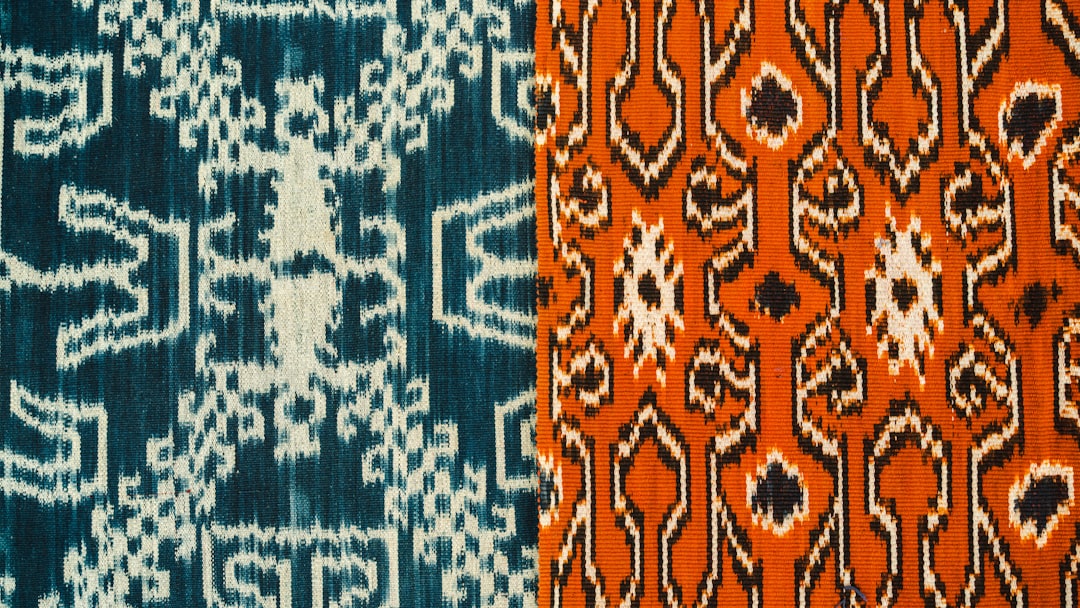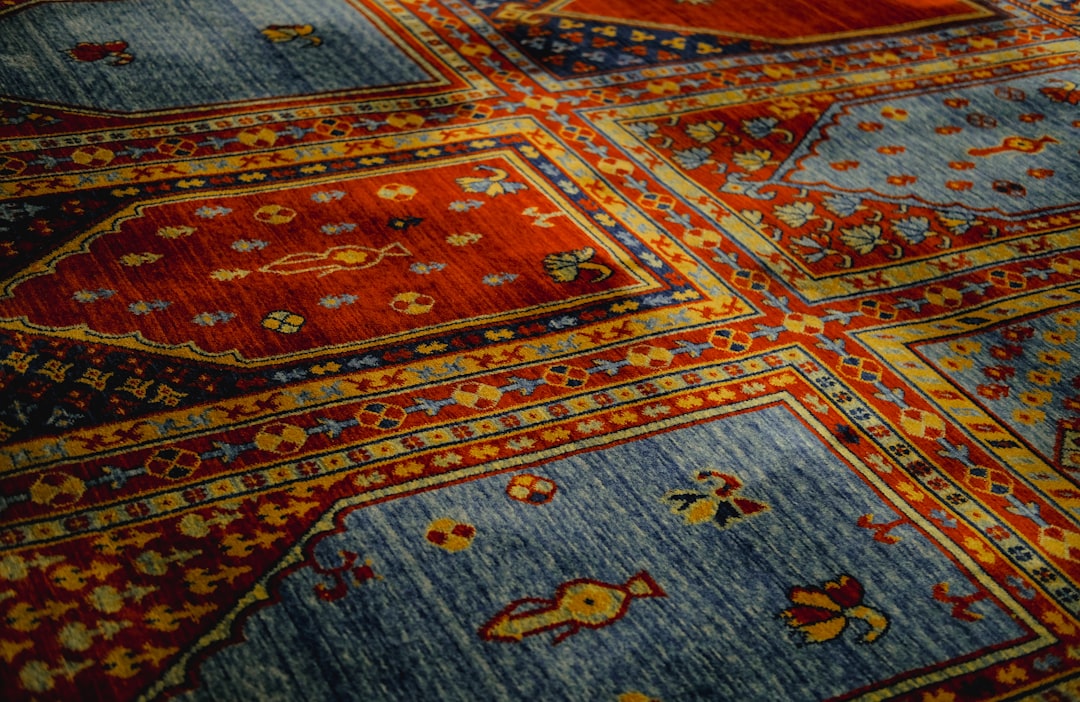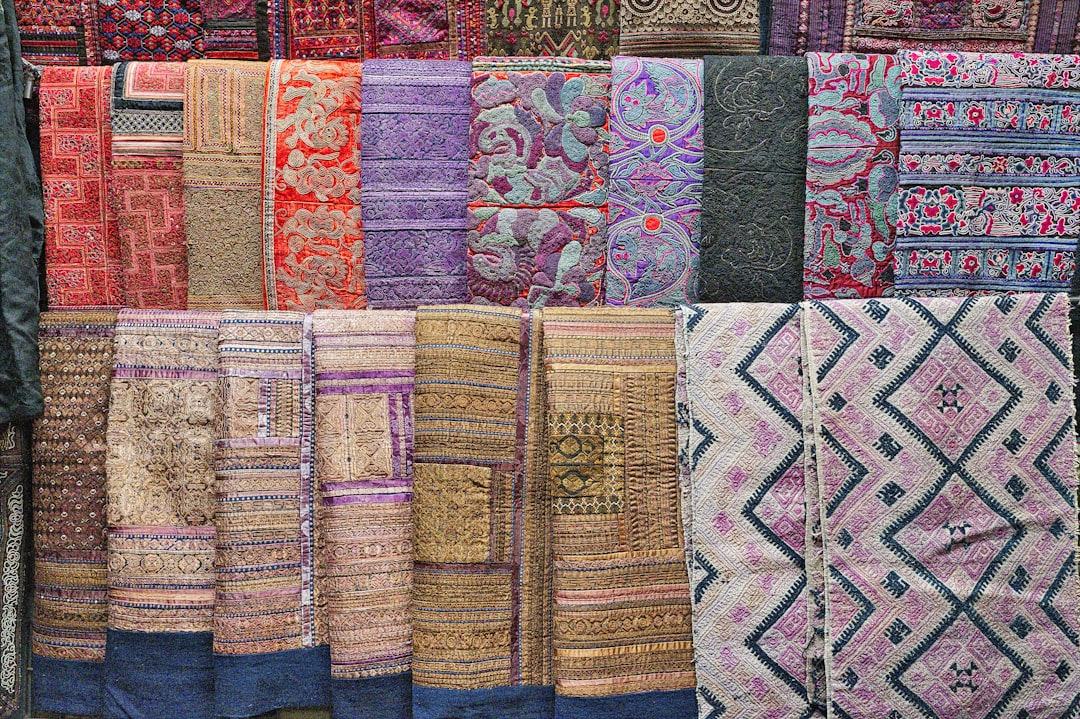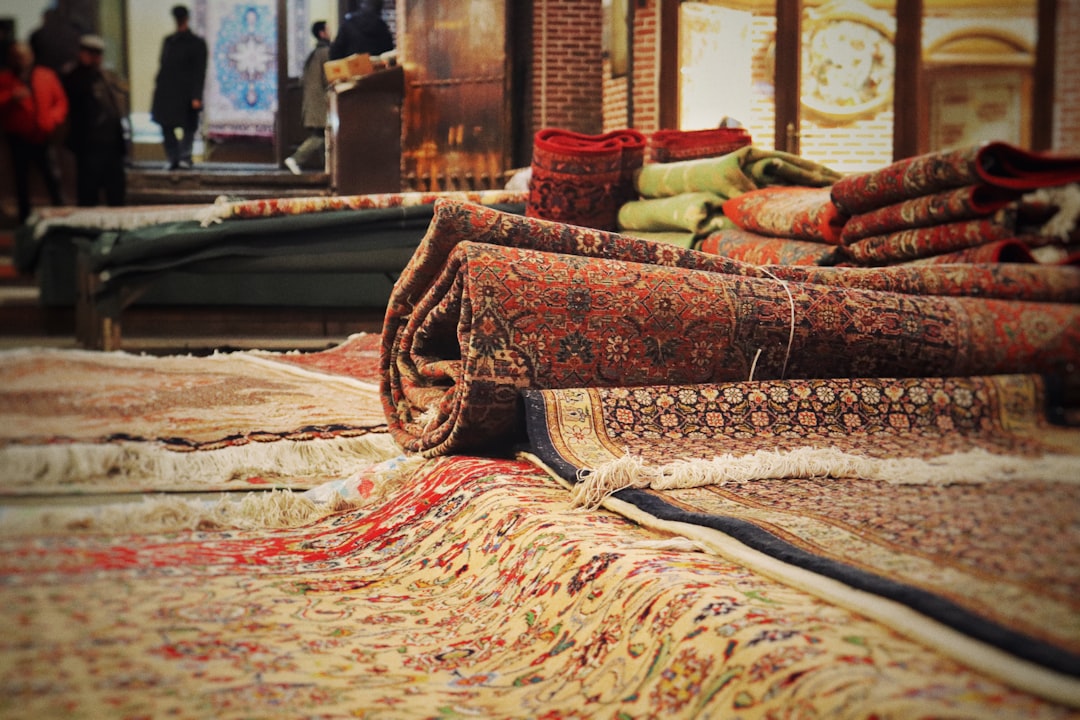

Engage prospects with a scan and streamline customer engagement with FREE QR code marketing tools by Sona – no strings attached!
Create a Free QR CodeFree consultation

No commitment

Engage prospects with a scan and streamline customer engagement with FREE QR code marketing tools by Sona – no strings attached!
Create a Free QR CodeFree consultation

No commitment
QR codes have transformed from a novelty into a strategic powerhouse, bridging offline engagement with online action. For carpet and rug retailers, QR codes offer a frictionless, data-driven way to boost in-store engagement, accelerate customer education, and create a seamless path from showroom to sale without the need for app downloads or complicated technology. For a broader view of how this fits into modern campaigns, see QR codes in marketing.
Retailers often struggle as high-value showroom prospects browse without any trackable interaction, creating a gap between physical engagement and actionable lead intelligence. With customers increasingly expecting instant access to detailed product information, AR carpet visualization tools and streamlined installation services, QR codes help close the gap by turning every display, price tag, and print ad into a trackable digital touchpoint. This provides immediate insight into customer interest that traditional methods often miss.
Discover actionable strategies for leveraging QR codes in carpet and rug retail to increase customer interaction, enable AR rug visualizer experiences, optimize pricing workflows, and deliver measurable results. Learn how a modern QR code approach can enhance operational efficiency, elevate the shopping experience, and transform unknown foot traffic into identified, high-intent audiences. For inspiration on immersive try-ons, explore AR rugs.

Many carpet and rug retailers lose potential sales when prospects walk the showroom, consider products, and leave without leaving a digital trace. Traditional paper-based brochures and static price tags provide little insight into buyer intent, which makes it difficult to follow up, personalize outreach, or even understand which displays are resonating.
QR codes bridge the gap between showroom visits and digital outcomes. They make it easy for shoppers to dive deeper into product research, interact with AR visualizers, collect samples into a digital wish list, and book installation consults on the spot. They also convert analog workflows into digital ones. Printed catalogs become dynamic product galleries. Paper sign-up sheets become mobile-friendly forms. Pricing binders become real-time offer pages that can be updated instantly.
For easy intake, consider using Google Forms QR codes.
Here is how to do it effectively:
For carpet and rug retailers, this shift turns anonymous browsing into identifiable interest. Every scan becomes a signal that can trigger a tailored experience and guide the buyer forward, making your showroom more interactive, your campaigns more measurable, and your pipeline more predictable. Modern platforms like Sona QR support every step of this transformation, from code creation to attribution.

Carpet and rug shopping is tactile and visual, but the buyer journey stretches across weeks of consideration. The moments that matter often happen away from a salesperson’s reach, such as comparing styles on the showroom floor, taking a sample home, or flipping through a print catalog later that night. Without a digital bridge, those moments produce no data, no follow-up, and no sale.
QR codes solve this by eliminating friction at exactly these offline-to-online handoffs. One scan gives customers instant access to what they need most in that moment. It might be a room visualizer, a rug size guide, a coupon, a price match request, or a measurement booking form. For staff, QR codes reduce manual tasks and help focus attention on the highest-intent shoppers who have already signaled interest by scanning.
The following advantages map directly to flooring retail:
When QR codes are placed where shoppers pause to evaluate choices, retailers unlock a steady stream of micro-conversions. Visualizer launches, spec downloads, and appointment requests create a trail of intent data that helps you prioritize follow-up and shape your merchandising strategy. For more flooring-specific tactics, see this flooring sales strategy.
Carpet and rug retailers can use several QR formats, each tailored to a buyer need and a store workflow. The key is selecting the right format for the job, then using dynamic codes whenever you need post-print flexibility and tracking.
Two principles guide format choice. First, meet the shopper where they are in the journey. A prospect comparing styles needs AR and specs, while a buyer ready to act needs a booking form or discount. Second, meet the environment where the code lives. Window signage needs short, compelling CTAs and large codes. Price tags need compact codes and scannable frames.
Popular formats for flooring retail include:
Most carpet and rug retailers benefit from dynamic QR codes. They let you update promotions, edit visualizer links, and A/B test destinations without reprinting tags or signage. They also provide deep tracking, which is essential for segmentation and attribution.

The most successful QR deployments focus on high-intent touchpoints, not just high-traffic ones. Look for the spots where shoppers make comparisons, ask price questions, or decide whether to move forward with measurement and installation. That is where a scan can remove friction and generate a measurable signal.
Start in the showroom, then expand to outbound media. In-store, codes can reduce dependency on staff availability and deliver information on demand. Outside the store, codes help you convert brand awareness into store visits and online sessions you can measure.
High-impact placements include:
By aligning QR placement with the buyer’s decision points, you collect clearer engagement data and guide shoppers toward the next logical step. This approach reduces friction, improves conversion, and informs where to invest in merchandising and media.

Three practical use cases consistently deliver value in carpet and rug retail. Each one replaces a manual or static step with a mobile experience that feels immediate and helpful.
The first use case solves the visualization gap that prevents buyers from committing without seeing a rug in context. The second addresses pricing fluidity and the operational burden of reprinting materials. The third meets customers at the service handoff, where small delays can cause drop-off.
These use cases work together to create a connected experience. A shopper can discover a rug, visualize it at home, and schedule installation within minutes using only their phone.
Every scan is a signal that includes context such as what product a person viewed, where they scanned, and what action they took next. With unique QR codes placed at each major touchpoint, you can automatically segment audiences based on real behavior instead of guesswork. This allows precision retargeting and more relevant follow-up that respects the buyer’s stage and interest. For hands-on tactics, see Sona retargeting playbook.
For carpet and rug retailers, the most useful segments often map to product interest, service readiness, and promotional sensitivity. By tagging scans with UTM parameters and syncing them to your CRM, you can build lists that drive targeted emails, SMS, and paid media audiences.
Practical segmentation strategies include:
Over time, these segments become a strategic asset. They improve the effectiveness of your promotions, reduce wasted ad spend, and make your sales team more proactive with the right prospects at the right time.
QR codes are the connective tissue that unifies your offline and digital marketing. They transform print and physical surfaces into interactive channels where performance can be measured and optimized. For carpet and rug retailers, this means every mailer, poster, and event can become a gateway to your strongest digital experiences. Explore how this works on digital signage.
Start by mapping your core channels and identifying the ideal next step for each. If a direct mail piece promotes a seasonal sale, the QR code should route to a tailored landing page with featured collections, a visualizer prompt, and an appointment scheduler. If a local TV spot builds awareness, the on-screen code should offer a high-value reason to scan such as a quiz that recommends rug sizes and styles.
Examples that fit flooring retail:
With a centralized platform like Sona QR’s product overview, you can manage every code, monitor performance across channels, and sync scan data with your CRM and ad platforms. This makes your multichannel programs more connected and your attribution more complete.
Inconsistent execution is a common reason QR initiatives underperform. A clear plan ensures that codes are scannable, destinations are persuasive, and analytics are actionable. Use this checklist to launch with confidence and improve over time.
Focus on one or two high-value use cases first, such as AR visualization at the point of display and installation scheduling on sample cards. Once these are running smoothly, expand to promotions, care content, and loyalty.
Decide which business outcome you want to drive first. For many carpet and rug retailers, reducing purchase friction with AR visualization and capturing service bookings are the fastest paths to measurable lift. Be specific about the action you want the shopper to take after scanning.
Choose between static and dynamic codes based on your need for flexibility and tracking. For most retail use cases, dynamic codes are best because offers, inventory, and campaigns evolve rapidly.
Design choices influence scan rates. A code that looks like your brand, includes a clear frame, and features an action-oriented CTA will perform better. Testing prevents avoidable failures.
Roll out the code to the surfaces that matter most for your chosen use case. Assign unique codes for each location or media type so you can compare performance and optimize.
Analytics turn scans into revenue. Review performance weekly during launch, then monthly as campaigns mature. Iterate placements, CTAs, and destinations based on what the data shows.
Treat this checklist as a repeatable playbook. Each cycle of deploying, measuring, and refining makes your QR ecosystem more effective and your customer experience more seamless.
One of the most persistent challenges in flooring retail is attributing in-store engagement to revenue. Knowing that someone picked up a sample or paused at a display is helpful, but without digital traces, it is hard to prioritize follow-up or justify marketing spend. QR analytics solve this by making every scan a trackable event that connects to outcomes.
The goal is not simply to count scans. It is to understand how those interactions influence the buyer journey. Did the scan lead to a visualizer session, a quote request, or an installation booking? Which display contributed to the conversion? With the right tools, you can answer these questions and direct resources where they matter most.
With Sona QR and Sona, retailers can:
The result is clear visibility from scan to sale. You can identify high-intent behaviors early, alert sales teams when it matters, and prove which placements and messages create revenue impact.
Once your initial use cases are live, you can scale impact by improving scan rates, deepening automation, and broadening coverage across surfaces and channels. Focus on tactics that increase clarity, reduce friction, and create helpful follow-ups.
In flooring retail, the best expansions are usually category-based codes for tracking, granular UTM tagging for attribution, and automation that responds to scan behavior. Small design choices, like prominent frames and short CTAs, can produce outsized gains in scan rates.
High-impact best practices:
Creative deployments that fit the category include loyalty punch cards that link to care guides and reorder pages, as well as QR codes on invoices that open an installation prep checklist and review form.

Retailers are already turning QR scans into measurable outcomes that matter. The common thread across top performers is a focus on high-intent placements, clear CTAs, and dynamic codes that adapt with the business.
These examples illustrate how different use cases come together to drive results while improving the customer experience:
Use these ideas as a springboard. The key is not the novelty of the code, but the clarity of the action and the quality of the destination experience.
Even strong campaigns can stumble without disciplined execution. Pitfalls often include burying codes in cluttered displays, using vague calls to action, failing to test scannability, or neglecting data follow-through after the scan.
Avoid these missteps by designing with intent. Every code should earn its spot by driving a specific behavior and producing data you will use. Pair the code with a concise benefit statement and ensure the destination loads quickly, is mobile-friendly, and makes the next step obvious.
Practical dos and do-nots:
By integrating QR code technology into your core sales and marketing initiatives, carpet and rug retailers can modernize the in-store experience, streamline purchasing workflows, and deliver data-driven results. Solving persistent challenges like untracked high-value prospects, anonymous showroom traffic, and missed conversion signals, modern QR strategies unlock a connected, personalized, and high-performing business model. From AR-powered rug visualization to dynamic showroom pricing and frictionless installation bookings, every scan now represents a tangible step toward uncovering intent, nurturing leads, and closing the gap between physical engagement and digital success.
Ready to operationalize this approach across your business? Start creating QR codes for free, connect scan activity to your CRM with Sona QR’s product overview, and use Sona to attribute QR engagement to revenue across channels. With the right plan and the right tools, every surface in your showroom becomes a smart, measurable entry point to growth.
QR codes have transformed carpet and rug retailers from simple point-of-sale environments into dynamic, data-driven engagement hubs. Whether it’s attracting new customers, enhancing in-store experiences, or showcasing product details instantly, QR codes replace guesswork with measurable actions—turning every rug display and promotional flyer into a powerful conversion tool. Imagine knowing exactly which designs captivate shoppers and drive purchases, allowing you to tailor your marketing effortlessly.
With Sona QR, you can create dynamic, trackable QR codes in seconds, update your campaigns instantly without costly reprinting, and connect every scan directly to sales performance. No missed opportunities—just smarter, more effective strategies that boost both engagement and revenue. Start for free with Sona QR today and transform every scan into a meaningful step toward growing your carpet and rug business.
Carpet and rug retailers can use QR codes to boost in-store engagement, enable AR rug visualization, provide live pricing updates, facilitate installation bookings, and capture measurable customer interactions that bridge offline and online experiences.
Showroom pricing with QR codes allows retailers to provide accurate, up-to-date pricing and promotions dynamically, reducing printing costs, improving responsiveness to inventory changes, and enhancing customer trust with real-time information.
Augmented reality rug visualizers launched via QR codes let customers see scale, pattern, and color of rugs in their own rooms using their phone camera, reducing uncertainty, increasing conversion rates, and lowering product returns.
Retailers can use dynamic QR codes linking to AR visualizers, live pricing, booking forms, product galleries, and contact vCards, as well as Wi-Fi access codes and SMS/email prompts to enhance customer engagement and streamline sales workflows.
By placing QR codes on sample cards, packaging, invoices, and post-purchase materials that link to measurement requests and installation scheduling pages, retailers create a frictionless path for customers to book services quickly and privately.
Use Sona QR's trackable codes to improve customer acquisition and engagement today.
Create Your FREE Trackable QR Code in SecondsJoin results-focused teams combining Sona Platform automation with advanced Google Ads strategies to scale lead generation

Connect your existing CRM

Free Account Enrichment

No setup fees
No commitment required

Free consultation

Get a custom Google Ads roadmap for your business






Launch campaigns that generate qualified leads in 30 days or less.
